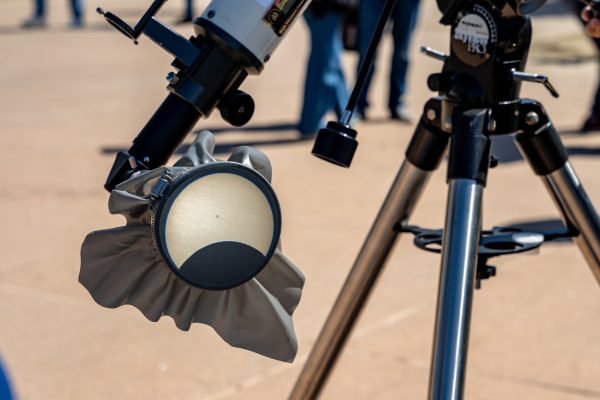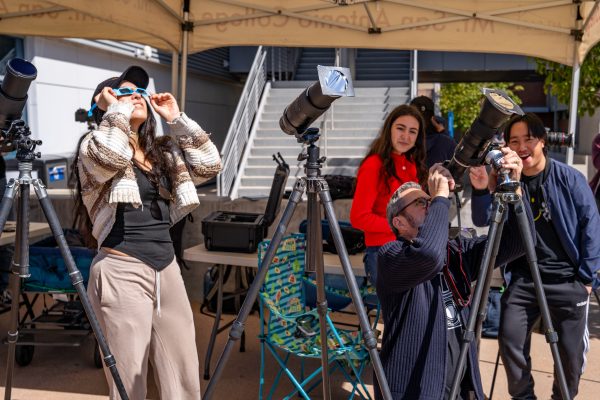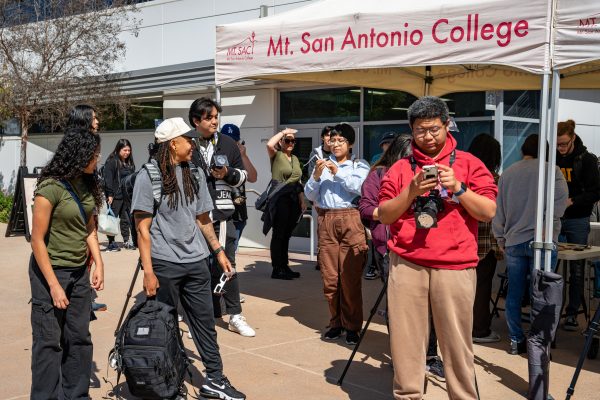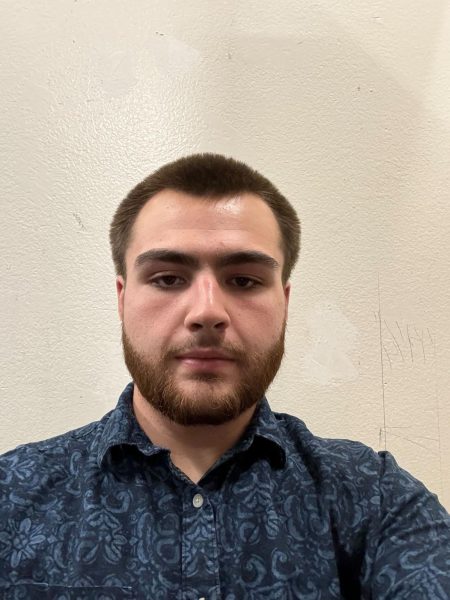On April 8, Mt. SAC held a watch party for the eclipse with an impressive turnout of students and members of the community, alike.
The partial eclipse began at 10:06 a.m. and it reached its maximum coverage at 11:13 a.m.
Students, faculty and members of the community joined together to view the rare phenomenon. Attendants were able to purchase glasses to view the eclipse without damaging their vision.
A partial eclipse occurs when the moon obstructs the sun’s light, while a full eclipse is much more rare and blocks the sun’s glow entirely. The visibility of an eclipse varies by location. Unfortunately, California won’t witness a full solar eclipse until 2045.
“We only see partial, but it’ll be about 50% covered eventually when it hits its maximum later this morning,” astrology professor Mike Hood said. “Partial eclipses are visible every 10-ish years.”

In front of building 77, volunteers and employees of Mt. SAC’s Randall Planetarium set up telescopes with filters able to view the eclipse, allowing anyone in attendance to wait in line to view the eclipse up close.

Jessica Draper, an astronomy lab tech employed at Mt. SAC spoke on the beauty of an event like this one. “I think it gets students interested in astronomy like, wow, I didn’t know that type of thing could happen,” Draper said. “But I also think it’s important because the sky is something a lot of people take for granted.”

Attendees of the event expressed their gratitude to be a part of history in a way.
Daniel Gonzalez, a former Mt. SAC student, spoke of his excitement to witness the eclipse with his family.
“It’s always nice to see [younger generations] engaging, becoming interested in things like this, like science and historic events so it’s a good feeling to see,” Gonzalez said.
Wes Cochran, a sophomore aerospace major volunteering at the event, expressed his joy at being a part of the experience.
“It’s pretty surreal, you know, seeing just those two celestial bodies just passing in front of each other,” Cochran said.
Mt. SAC’s Randall Planetarium also hosted shows informing attendees about the science behind the sun and the massive size of our universe.




Gabriel Luna • Feb 21, 2025 at 5:53 pm
Jessica Draper say Earth books will be return and drop off at Randall Planetary planetarium